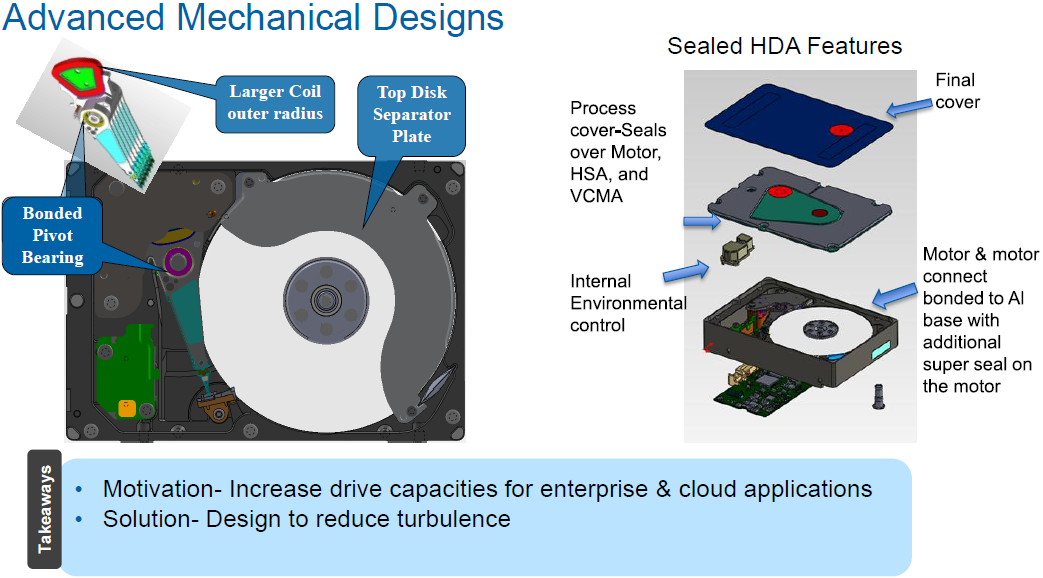A bit late, but Seagate is finally clawing its way back against WD/HGST.
Seagate, after a slightly embarrassing pause, has launched a 10-terabyte helium-filled enterprise-class 3.5-inch hard drive. The drives aren't yet commercially available—they're being sampled to both Alibaba and Huawei at the moment—but they'll probably be around £600/$800 when they eventually arrive.
This 10TB drive marks Seagate's first foray into helium-filled storage devices. The company's primary competitor, Western Digital/HGST, has been selling helium-filled drives since 2013.
While HGST was more than happy to share lots of details about its hermetically sealed helium-filled hard drives, Seagate, rather annoyingly, has only sent us a vague press release. Seagate's 10TB drive has seven platters—the same number as the 10TB HGST drive—and 14 heads. There's no word on spindle speed, but it's probably 7200RPM. The press release says that the new Seagate drive uses the company's PowerChoice tech to reduce power consumption, but falls short of actually providing some numbers. There are two versions of the drive: one with a 6Gb/s SATA interface, another with 12Gb/s SAS.
Mean Time Between Failure (MTBF) on the new Seagate drive is 2.5 million hours—a significant bump over the 2 million hours MTBF of Seagate's non-helium-filled enterprise drives. The HGST helium drives also have a MTBF of 2.5 million hours.
Perhaps most importantly, we believe that Seagate's 10TB hard drive uses perpendicular magnetic recording (PMR) rather than shingled magnetic recording (SMR). SMR allowed Seagate to keep up with Western Digital in terms of capacity, but at the expense of other important characteristics, making it better suited to archival rather than online storage. In theory, Seagate's 10TB PMR helium-filled drive should have very similar performance and power characteristics to the 10TB HGST drive.
Prior to the arrival of hermetically sealed enclosures, hard drives were filled with good ol' air. Helium is much thinner than air, and thus provides much less drag on the rapidly rotating roundels, which in turn drives down power consumption and increases reliability. Helium has also allowed HGST and Seagate to cram seven platters into a standard-height 3.5-inch hard drive, rather than the usual six, allowing for higher storage capacities.
Helium probably won't take us far beyond 10TB, though; helium doesn't directly increase the maximum areal density of the hard drive platters. For that, we'll need a new read/write technology that can further shrink the size of the already-just-a-few-nanometre-long magnetic grains used to store data. The most likely candidate is HAMR—heat-assisted magnetic recording—where a little laser sits alongside the read/write head, heating up small regions of the platter.
While Western Digital/HGST has been more vocal about its helium tech, Seagate has been banging the HAMR drum for a few years now, hinting that it could have some HAMR drives on the market this year. Maybe, after a couple of uncomfortable years, it'll soon be time for Seagate to take the tech lead again?




0 comments:
Post a Comment
Thanks for visiting the best tech and science gist blog in Africa
how do you rate our updates? we hope you find the updates and tips useful.
please visit again for more gist on Internet surfing and day-to-day computer tips
Olanrewaju O. Philip
Blog Author.